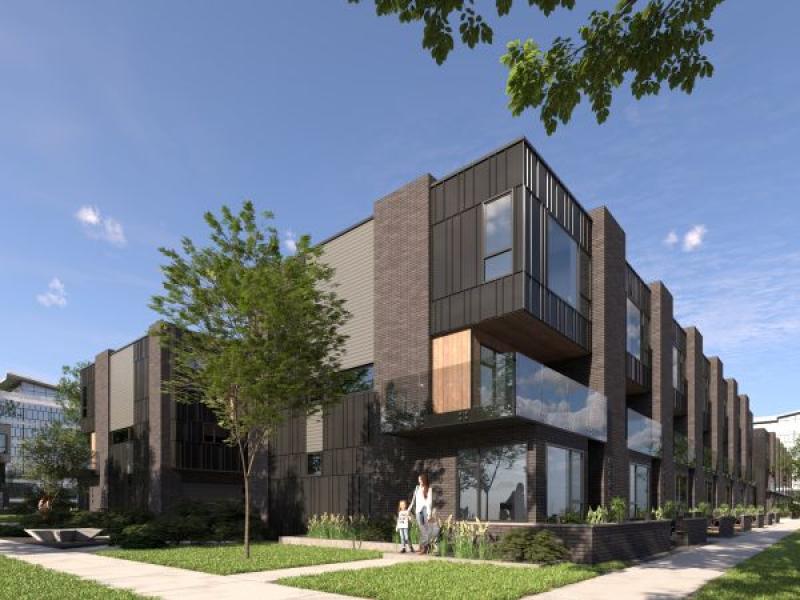
The Canada Mortgage and Housing Corporation (CMHC) suggests an additional 3.5 million housing units – on top of what is already being built – will be needed by 2030 to bring down prices to a target level.
Housing shortages in Canada: Updating how much housing we need by 2030 follows up the CMHC’s report from last year on how much housing would be needed to restore affordability by 2030.
The agency’s definition of affordability for this report is “the share of after-tax income that a household with average income would need to spend to buy the average house.” Its threshold is for families to spend no more than 40 to 45 per cent of disposable income on housing.
Though the top-line figure of approximately 3.5 million more housing units across Canada remains unchanged, the national housing agency said the size of the supply gap has changed at the provincial level since its last report.
“This report again highlights how important it is to increase housing supply if we are to make housing affordable for everyone in Canada,” CMHC writes.
“It also highlights how important it is to study both economic and demographic variables given the recent changes that have been experienced in both.”
Updating the CMHC's projection
An economic slowdown in 2023 led to a lowering of the starting values from which the CMHC projects household income for 2030 and thus demand for housing.
By 2030, the CMHC now anticipates incomes per household in Ontario and British Columbia will be lower than previously projected. As a result, Ontario and British Columbia are projected to have relatively less demand for housing, while Alberta and Quebec will have more.
For demographic trends, the CMHC took data from Statistics Canada and Oxford Economics to project a “relatively sharp decline in growth in the overall population in the years up to 2030.”
The CMHC’s latest prediction for Canada’s 2030 population is 43 million, not much different from its expectation of 42.8 million in last year’s report.
The number of households is expected to be lower in Alberta and Ontario, while proportionate growth in household numbers is projected for British Columbia, Quebec and the Atlantic provinces.
Its business-as-usual projection lowered the CMHC’s expectation for the number of housing units. Now, the CMHC projects there will be 18.2 million units by 2030 compared to the 2022 projection of 18.6 million units.
The shortfall in housing construction capacity is a critical factor in this decline. Material costs have risen, labour is in short supply and construction financing is harder to access.
Quebec, Ontario, Alberta and British Columbia were most impacted by the updated projections for 2030 housing units.
How provincial housing demand is expected to change
The national projected supply gap for 2030 did not change noticeably between the last two reports, holding at approximately 3.5 million.
Notable differences did appear on a provincial level, however. Ontario’s projected housing gap went from 1.85 million in the 2022 report to 1.48 million in the 2023 report.
Quebec, B.C. and Alberta saw increases in the projected housing supply gap year-over-year. Quebec’s figure grew from 0.62 million to 0.86 million; B.C.’s rose from 0.56 million to 0.61 million; and Alberta’s housing gap went from 0.02 million to 0.13 million.
The CMHC explained its rationale for the adjustments:
- The lowering of Ontario’s projected households and less growth in income per household is expected to lower household demand and thus a lower supply gap;
- Quebec’s higher growth in household income and a small drop in household numbers will, on balance, increase housing demand;
- B.C.’s supply gap increases because of a lower projected number of housing units that will be built; and
- Alberta saw an increase in its projected supply gap because of a sharper decrease in housing starts compared to other large provinces.
Examining high-population-growth and low-economic-growth scenarios
The CMHC also considered scenarios of sluggish economic growth and high population growth driven by immigration, and how they would alter the course of housing supply in 2030.
The scenarios highlight the sensitivity of the housing market to changes in Canada’s economy or population.
In a low-economic-growth scenario, the 2030 housing gap is 3.1 million units; in its high-population-growth scenario, the number of housing units needed increases to four million.
More housing supply needed
Reiterating the conclusion from its 2022 report, the CMHC stressed the importance of increasing housing supply to make housing affordable.
The corporation said it will continue to study the drivers of housing demand and supply.
Next year, it expects to publish a report looking at incorporating the impact of population mobility across regions and provinces, and the number of rental units needed to achieve affordability and the distribution of impacts across income quintiles.










